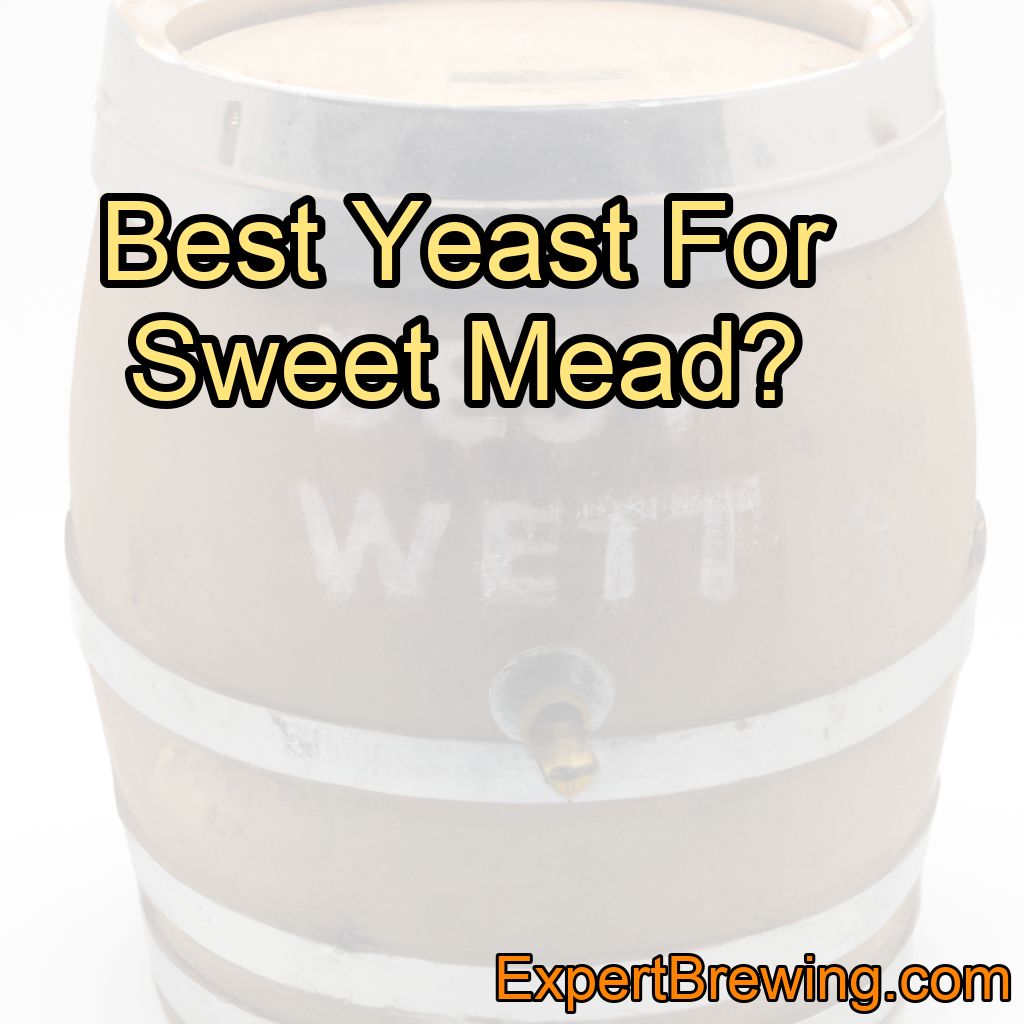As a seasoned brewer with over a decade of experience, I’ve played around with all kinds of ingredients to create brews that excite the palate and warm the soul.
One of my favorite beverages to make, and a crowd favorite, is sweet mead. Now, the key to brewing a delicious sweet mead lies primarily in the yeast you choose.
The best yeast for sweet mead, in my experience, is Lalvin 71B. It’s a versatile yeast strain that produces a rich bouquet of flavors, while also having a high alcohol tolerance, making it ideal for sweet meads.
Understanding Yeast’s Role in Mead Making
Before getting into the specifics of why Lalvin 71B-1122 is the best yeast for sweet mead, it’s important to understand the role yeast plays in mead making as a whole.

Yeast is responsible for the fermentation process, which turns sugar into alcohol. The yeast strain you choose can significantly impact the flavor, aroma, and sweetness of your mead.
What Makes a Good Yeast for Mead?
In my brewing experience, there are a few key attributes that make a yeast strain good for mead. The yeast should have a high alcohol tolerance, as this allows it to continue fermenting and consuming sugars for a longer period.
It also needs to be resilient, capable of handling a range of temperatures and fermentation conditions. Finally, a good yeast strain for mead should produce desirable flavors and enhance the ingredients’ natural characteristics.
Why Lalvin 71B is the Best Yeast for Sweet Mead
Now, let’s dive into why Lalvin 71B-1122 is my top choice for sweet mead. This yeast strain is known for its ability to metabolize malic acid, which in turn softens the mead and brings out a more fruit-forward profile.
This feature alone makes it a great choice for sweet meads, as it enhances the honey’s natural sweetness while adding a depth of flavor.
Lalvin 71B-1122’s Alcohol Tolerance
Another reason why I love using Lalvin 71B-1122 for sweet meads is its alcohol tolerance. This yeast strain can withstand alcohol levels up to 14%, which allows it to keep fermenting and consuming sugars, even when the alcohol content gets high. This means that more residual sweetness is left behind, resulting in a sweeter mead.
Other Suitable Yeasts for Sweet Mead
While Lalvin 71B-1122 is my favorite, there are other yeasts that also work well for sweet meads. Wyeast 4184 ‘Sweet Mead’ is another great option, designed specifically for producing sweet meads.
It has a lower alcohol tolerance, which leaves more residual sweetness behind, resulting in a sweeter mead.
Another good option is White Labs WLP720 ‘Sweet Mead/Wine’ yeast. This yeast strain is known for producing fruity esters and emphasizing the honey’s natural flavors.
The Impact of Yeast on Mead Flavor
The yeast strain you choose will significantly impact your mead’s flavor. Some yeasts produce more fruity esters, while others may produce more spicy or earthy notes. The yeast strain can also impact the mouthfeel and sweetness level of your mead.
Experimenting with Different Yeasts
While I’ve shared my favorite yeasts for sweet mead, don’t be afraid to experiment with different strains. Brewing is a creative process, and part of the fun is trying out different ingredients and techniques to see what works best for you.
Conclusion
In conclusion, the best yeast for sweet mead is Lalvin 71B-1122, but other suitable options include Wyeast 4184 ‘Sweet Mead’ and White Labs WLP720 ‘Sweet Mead/Wine‘ yeast. The yeast strain you choose will significantly impact the flavor, aroma, and sweetness of your mead.
Here are some key takeaways:
1. Yeast plays a critical role in mead making, turning sugar into alcohol.
2. The best yeast for sweet mead is Lalvin 71B-1122 due to its ability to metabolize malic acid and its high alcohol tolerance.
3. Other suitable yeasts for sweet mead include Wyeast 4184 ‘Sweet Mead’ and White Labs WLP720 ‘Sweet Mead/Wine’ yeast.
4. The yeast strain significantly impacts the flavor, aroma, and sweetness of the mead.
5. Experimenting with different yeast strains can lead to exciting new flavors and profiles.
6. A good yeast strain for mead should have a high alcohol tolerance and be resilient in various conditions.
7. Mead yeast should also enhance the natural characteristics of the ingredients.
8. Lalvin 71B-1122 is known for producing a more fruit-forward profile.
9. The alcohol tolerance of Lalvin 71B-1122 allows it to leave more residual sweetness in the mead.
10. Don’t be afraid to experiment with different yeast strains to find what works best for your brewing style.
FAQs
What is the best yeast for low ABV mead?
There are a few yeast strains that work well for producing low alcohol mead. One popular option is Lalvin D-47, which is known for its ability to ferment mead with a moderate alcohol content and produce a well-balanced flavor profile. Another good choice is Lalvin 71B-1122, which is often used for making sweet or semi-sweet meads with lower alcohol levels. Ultimately, the best yeast for low ABV mead will depend on your specific preferences and desired flavor profile.
What is the best yeast for spiced mead?
The best yeast for spiced mead depends on personal preference and desired flavor profile. However, many meadmakers recommend using yeast strains that can tolerate high alcohol levels, such as Lalvin EC-1118 or Lalvin K1V-1116. These yeast strains are known for their ability to ferment mead to dryness, resulting in a clean and crisp finished product. Ultimately, it is recommended to experiment with different yeast strains to find the one that best complements the desired spices and flavors in your mead.
What is the lowest alcohol content in mead?
The lowest alcohol content in mead typically starts around 3-5% ABV (alcohol by volume). However, it’s important to note that mead can range in alcohol content, from low ABV session meads to higher ABV meads that can reach 15-20% or even higher.
What did Vikings ferment mead in?
Vikings typically fermented mead in large wooden barrels or containers made from materials such as oak, ash, or pine. These vessels were often lined with a resin or wax coating to prevent leakage and maintain the quality of the mead during fermentation.
What kind of yeast is used in mead?
The yeast typically used in mead production is Saccharomyces cerevisiae, commonly known as wine yeast. It is chosen for its ability to ferment the sugars present in honey and produce the desired flavors and alcohol content in mead.
What did Vikings use for yeast?
The Vikings primarily used wild yeast for fermentation. They would have relied on naturally occurring yeast present in the environment, such as on fruits, grains, or in the air.







